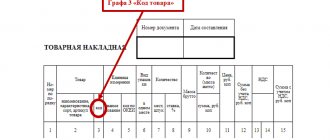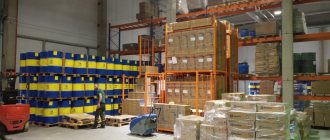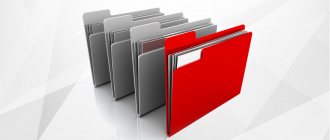The experiment on labeling dietary supplements with identification tools started on May 1, 2021 and will last until August 31, 2022. In Russia, dietary supplements are subject to mandatory state registration in accordance with current legislation.
The labeling system involves applying DataMatrix codes only to those biologically active food additives that are registered and documented accordingly. Manufacturers, importers and sellers of dietary supplements can participate in the experiment on a voluntary basis. In this article we will look at the main stages of preparation for participants in the circulation of dietary supplements before mandatory labeling.
Experiment roadmap (05/01/2021–08/31/2022)
The roadmap involves the following stages of the experiment on labeling dietary supplements:
1. April 29, 2021 - Decree of the Government of the Russian Federation dated September 29, 2021 No. 673 “On conducting an experiment on labeling biologically active food additives by means of identification on the territory of the Russian Federation” was signed.
2. May 1, 2021 - the beginning of the experiment on labeling dietary supplements.
3. August 24, 2021 - the test circuit of the “Honest SIGN” marking system was opened.
4. September 7, 2021 - the productive contour of the “Honest SIGN” marking system was opened.
- functions for experiment participants:
- creating a product card,
- ordering and applying marking codes,
- putting goods into circulation,
- movement of goods along the supply chain,
- disposal of marked goods using cash register equipment.
5. November 30, 2021, February 1, 2022, August 1, 2022 - assessment of the results of the experiment and submission of reports to the Government of the Russian Federation.
6. August 31, 2022 - end of the experiment.
To label dietary supplements, manufacturers/importers must:
- Certificate of state registration issued for a biologically active food additive and included in the Unified Register of Certificates of State Registration of the Eurasian Economic Commission.
- HS according to the regulations on the experiment (PPRF dated 04/29/2021 No. 673).
8 POPULAR QUESTIONS ABOUT EXTENDED LIABILITY OF PRODUCTS AND IMPORTERS OF GOODS
N.V. Biryukova
Extended responsibility of producers and importers of goods (hereinafter referred to as EPR) assumes that manufacturers and importers assume responsibility for the disposal of released (imported) goods and packaging of such goods at the end of their life cycle.
The purpose of the EPR is to develop the industry for the separate collection and processing of waste and to stimulate the return of waste to economic circulation. This mechanism has been operating successfully for a long time in the countries of the European Union, Japan, China, and South Korea. In our country, the practice of law enforcement under EPR has not yet been developed, so resource users who fall under this responsibility have many questions. In this article we will answer some of them.
We have several separate divisions on the territory of the Russian Federation. Where to submit declarations and reports?
A declaration on the number of finished goods put into circulation on the territory of the Russian Federation, including packaging that are subject to disposal, and reporting on compliance with waste disposal standards from the use of goods subject to disposal after they have lost their consumer properties are submitted before April 1 in relation to imported goods - to the central office Rosprirodnadzor, in relation to manufactured goods - to the territorial body of Rosprirodnadzor at the place of state registration .
Since current legislation does not provide otherwise, declarations and reports can be submitted for the legal entity as a whole. Accordingly, calculations can be made taking into account the total volume of goods sold and the total volume of waste disposed of across all departments.
We deliver our goods on wooden pallets. Are we required to pay an environmental fee for them?
The currently valid List of finished goods, including packaging, subject to disposal after they have lost their consumer properties, approved by Order of the Government of the Russian Federation dated December 28, 2017 No. 2970-r (hereinafter referred to as List No. 2970-r), consists of two sections:
— Section I “Goods, with the exception of packaging, subject to disposal after they have lost their consumer properties”;
— Section II “Packaging of goods subject to disposal after it has lost its consumer properties.”
Wooden pallets, pallets and other loading boards are not included in group No. 53 “Wooden and cork packaging” of Section II of List No. 2970-r. From this we can conclude that these products are not packaging and those who produce these products must report on them.
A similar position was previously set out in the Information of the Ministry of Natural Resources of Russia dated May 16, 2017 “On current issues of fulfillment of the “extended” responsibility of manufacturers and importers of goods (hereinafter referred to as the ERP)”, according to which in relation to reusable packaging, including reusable wooden containers (pallets, pallets and etc.), the obligation to declare its quantity and, if necessary, to pay an environmental fee rests with the producers of such packaging, which in this case is a product for them.
However, the question remained of what constitutes “reusable packaging.” Now we can definitely say that their manufacturers must account for pallets and, if necessary, pay an environmental fee.
In the List of finished goods, including packaging, subject to disposal after they have lost their consumer properties, approved by Order of the Government of the Russian Federation dated September 24, 2015 No. 1886-r (as amended on May 4, 2017; hereinafter referred to as List No. 1886-r), there are no OKPD codes polyethylene film, according to which suppliers ship it to us. Can we not report for 2021 on it?
List No. 1886-r contains product codes according to the All-Russian Classifier of Products by Type of Economic Activity OK 034-2014 (CPES 2008) (approved by Order of Rosstandart dated January 31, 2014 No. 14-st (as amended on September 8, 2017); hereinafter - OKPD 2), therefore, regarding polyethylene film, you need to check with your suppliers for codes specifically for OKPD 2.
Subgroup 22.22.1 “Plastic packaging products” OKPD 2 consists of all those items that are included in List No. 1886-r. In other words, it will not be possible to reasonably correlate subgroup 22.22.1 with any other type of packaging not included in List No. 1886-r, and it is necessary to report for polyethylene film and, if necessary, pay an environmental fee.
However, for example, self-adhesive tape (adhesive tape) in accordance with OKPD 2 has code 22.29.21.000 “Plates, sheets, film, tape and other flat polymer self-adhesive forms, in rolls no more than 20 cm wide” and in group 19 “Other plastic products » List No. 1886-r is not included, therefore the demands of some territorial departments of Rosprirodnadzor to report on it are clearly unlawful.
Note:
List No. 2970-r, which is in force today, contains Section II “Packaging of finished goods subject to disposal after it has lost its consumer properties.” Packaging is assigned to the appropriate group of Section II based on the material from which it is made. The material can be identified, inter alia, by the letter designation and (or) digital packaging code specified in TP CU 005/2011 “On Packaging Safety”, approved by Decision of the Customs Union Commission dated August 16, 2011 No. 769.
The assignment of packaging and closures made from combined materials to the corresponding group of Section II of List No. 2970-r is carried out according to the main material in the composition. Combined material is a two-layer or multilayer material, the layers of which cannot be separated without losing the functional or physical properties of such material.
Thus, from 2021 it will be necessary to report for tape, labels, and other packaging materials.
We made a calculation and showed the amount of packaging (plastic cups, paper bags and cardboard boxes) that we had. We do not attach any supporting documents to the reporting, because... this is not required. How will the receiving party check the accuracy of the calculation?
According to clause 16 of Regulation No. 1417, when monitoring the completeness and reliability of information on the quantity of goods released into circulation on the territory of the Russian Federation, specified in the declaration
, at the request of Rosprirodnadzor
or its territorial body, the manufacturer, importer of goods submits
duly certified copies of primary accounting documents or customs documents
that served as the basis for drawing up the declaration.
Also, in accordance with clause 14 of Rules No. 1342, when carrying out control, Rosprirodnadzor has the right to request
from the manufacturer or importer of goods:
— copies of contracts (if they are concluded with operators or regional operators);
— copies of the waste disposal act(s).
How can you reduce your environmental tax?
According to paragraph 3 of Art. 24 of the Federal Law of June 24, 1998 No. 89-FZ “On Production and Consumption Waste” (as amended on December 31, 2017; hereinafter referred to as Federal Law No. 89-FZ) in the production of packaging and goods, which, after losing their consumer properties, generate waste, which are represented by biodegradable materials, the following economic incentive measures may be applied:
— provision of tax benefits in the manner approved by the legislation of the Russian Federation on taxes and fees;
— provision of benefits in relation to payment for the negative impact on the environment when disposing of waste and in relation to the payment of environmental fees;
— provision of funds from the federal budget and budgets of the constituent entities of the Russian Federation in accordance with the budget legislation of the Russian Federation.
By virtue of clause 13 of Art. 24.2 of Federal Law No. 89-FZ in case of overfulfillment
manufacturer, importer of goods in the previous calendar year
of recycling standards,
such standards in the current calendar year are reduced by the difference between the actual indicators of waste disposal from the use of goods and the established recycling standards. Therefore, as far as possible, maximum utilization should be shown according to available supporting documents.
Based on clause 14 of Art. 24.2 of Federal Law No. 89-FZ, if the packaging of a product to be recycled is made from recycled materials, a reduction factor
, calculated as the difference between one unit and the share of recycled materials used in the production of the specified packaging.
In addition, packaging solutions can be analyzed and optimized, incl. think about reducing their material consumption.
Please remember that self-disposal
can be implemented by:
— organizing your own infrastructure facilities for the collection, processing, and disposal of waste from the use of such goods;
— concluding agreements with an operator for the management of municipal solid waste, a regional operator, an individual entrepreneur, a legal entity that disposes of waste from the use of goods (except for municipal solid waste);
— creating an association of manufacturers and importers of goods.
It is necessary to assess the feasibility of collecting and recycling waste at least in quantities that correspond to the standard for their disposal. At the same time, you should think about how the recycling will be carried out, who and under what conditions will be involved in it, and also calculate the possible costs and compare them with the amount of the environmental fee. It is also worth considering the positive effect on the company's image as an environmentally responsible manufacturer.
If you involve third parties in the implementation of recycling standards, take into account their authority (preference should be given to a regional operator when one appears). At the same time, the civil contract should define the responsibility of these persons in the event of non-acceptance of reporting in whole or in part.
When joining the association, it should be taken into account that in the event of non-fulfillment or partial fulfillment by the association of obligations for the disposal of waste from the use of goods that were transferred to it by the manufacturer, importer of goods in accordance with the concluded agreement, the obligations of the manufacturer, importer of goods are recognized as not transferred to the extent of the obligations not fulfilled by the association , i.e., in fact, the association is not responsible for the completeness of recycling and reporting. There are no special rules for the creation of these associations.
We note that in accordance with clause 4.1 of Art. 24.2 of Federal Law No. 89-FZ, the standard for recycling waste from the use of goods can be met by recycling any waste from the use of goods included in one or more groups of goods,
subject to a similar purpose of such goods and (or) a similar method of processing waste from their use. Thus, List No. 2970-is supplemented by a column that establishes the category of goods of a similar purpose and (or) a similar method of processing waste from their use. Such positions have the same digital code in the specified column.
In the future, when working with consumers of products, we recommend that contracts for the supply of products provide for the obligation of consumers to send copies of packaging waste disposal acts and relevant contracts to the manufacturer.
For example,
You can supply the products with a covering letter, which will indicate;
“In order to avoid an increase in the price of products, we ask you to send a certificate of disposal of product packaging.”
In addition, you can calculate motivating discounts comparable to the amounts of the environmental fee, or organize promotions for partial compensation of disposal costs, etc.
You should also be prepared for a dispute if reporting is not accepted. In order to increase the likelihood of defending your rights in court, it is necessary to competently draw up disposal acts, as well as think through a mechanism for reliably determining the volume (weight) of waste goods and packaging transferred for disposal.
Considering the approval of the new list and new standards, in accordance with which documents should the environmental fee be calculated for 2021?
Based on the letter of Rosprirodnadzor dated January 17, 2018 No. ВС-06-02-32/721 “On payment of the environmental fee” for the reporting year 2017, payment of the environmental fee and submission of calculations of the amounts of the environmental fee are carried out no later than 04/15/2018 in accordance with the Rules collection of environmental fees approved by Decree of the Government of the Russian Federation dated October 8, 2015 No. 1073 (hereinafter referred to as Rules No. 1073), according to the form for calculating the amount of environmental fees approved by Order of Rosprirodnadzor dated August 22, 2016 No. 488, and using the recycling standards established for 2021 by the Order Government of the Russian Federation dated December 4, 2015 No. 2491-r.
What liability is provided for failure to submit declarations, reports and failure to pay environmental fees?
In accordance with the letter of Rosprirodnadzor dated 01/09/2018 No. AS-10-02-36/156 “On sending clarifications”, failure to submit or untimely submission of a declaration, reporting, as well as the presentation of false information in a declaration, reporting is regarded as concealment, deliberate distortion or untimely reporting complete and reliable information about the sources of pollution of the environment and natural resources or other harmful effects on the environment and natural resources, and therefore is an administrative offense, administrative liability for which is established by Art. 8.5 of the Code of the Russian Federation on Administrative Offenses (as amended on 02/05/2018; hereinafter referred to as the Code of Administrative Offenses of the Russian Federation).
Also, according to clause 25 of Rules No. 1073, if within 30 calendar days from the date the payer received the request for voluntary repayment of the debt, the payer has not paid the specified debt voluntarily, the territorial body of Rosprirodnadzor has the right to collect the debt in court.
In addition, the Russian Ministry of Natural Resources has developed amendments to Art. 8.2 of the Code of Administrative Offenses of the Russian Federation, according to which the fine for non-payment of the environmental fee is planned to be determined in the amount of double the amount of the environmental fee.
Published in the journal "Ecologist's Handbook" No. 3, 2021.
Description of business processes of the “Honest ZNAK” labeling system
In order to describe a product in the labeling system, you must fill out a number of fields through your personal account. For this you will need:
- product code (if available);
- full name of the product;
- 10-digit EAEU HS code;
- registration number and date of issue of the state registration certificate;
- name of the documents in accordance with which the products are manufactured;
- application area;
- release form;
- storage conditions.
Spelled incorrectly
Manufacturing plant, manufacturing plant.
- Are the obligations of the debtor-account holder subject to fulfillment by the bank according to the claims of creditors of the 1st-3rd priority?
- The head of the LLC was convicted under Art. 173.1. Criminal Code of the Russian Federation. What are the consequences for deals entered into by this executive?
- What are the features of hiring a part-time foreigner with a patent to work in a specific profession?
- Is it necessary for the institution to approve the access control regulations?
- Does the State Budgetary Institution have the right to purchase other services to provide public services if their use is not provided for by technical regulations?
How the traceability system works
1. Manufacturer/importer.
The manufacturer applies a digital code to the product. “Honest ZNAK” assigns a unique DataMatrix code to each product so that the manufacturer or importer places it on the product packaging. The manufacturer submits documents on putting the product into circulation and sends it to the logistics department.
2. Logistics.
The entire journey of the goods is recorded at every stage. The logistics link receives the goods, submits data to the system via electronic document management (EDF) and generates a universal transfer document (UDD) in the Chestny ZNAK system. UPD reflects the movement of goods at each stage - from manufacturer to distributor.
3. Shop.
In the store/pharmacy, the product code is scanned and placed on the shelf. The labeling system records the passage of goods throughout the supply chain, including checking the code in the store when placing the goods on the shelf, which eliminates the possibility of counterfeits.
4. Cash desk.
After the product reaches the store/pharmacy, it is taken out of circulation using a cash register. The checkout software must be updated to work with labeled items. The product is sold at the checkout - in the system the product receives the status “code withdrawn from circulation.”
5. Consumer.
The consumer can check all information about the product by scanning the labeling code through the Honest SIGN mobile application. The end consumer can also check whether the sale has been completed correctly.
What's the rule
From a spelling point of view, manufacturing plant and manufacturing plant are written with a hyphen because the application manufacturer/manufacturer and the noun plant are expressed by nouns, between which the conjunction and (plant and manufacturer/manufacturer) can be inserted. If, when such a conjunction is formulated, the phrase becomes meaningless, then the complex noun will be written together (for example: ancient Greek). The manufacturer is the company that has the legal rights to the product. A manufacturer is someone who does the work of producing something but has no legal rights. In the case of the word “factory”, it is more appropriate to use the application “manufacturer”.
Example sentences:
- The manufacturer took responsibility for defective products that went on sale.
- Schoolchildren attended an excursion to a jewelry manufacturing plant.
Necessary equipment for the manufacturer
The manufacturer chooses one of three methods of applying labeling codes to consumer packaging. There are three ways to apply markings:
1. Typographic method - printing codes in the printing house from which the company orders the packaging, that is, the packaging arrives for production immediately labeled.
The typographic method of marking assumes that the codes will be printed in a printing house.
The Chestny ZNAK website contains a list of printing houses that have the technical capabilities to work with markings. The main advantage of printing houses is that before handing over packages with applied identification means to the customer, printing houses independently check the correctness and validity of the codes.
2. Labeling - printing codes on stickers that are additionally affixed to the product (on a label or on a closure) - can also be printed in a printing house.
With this method, the code is printed on white self-adhesive sheets and glued to the bottle cap. Today it is the most universal printing method. Using this method, you can print the label in a printing house or in your own production.
3. Direct application - application of codes on the production line directly to the label, packaging or closure using direct printing.
Direct application assumes that the manufacturer has decided to apply labeling codes to the packaged water themselves. The direct printing method is optimal for medium and large enterprises.
Methods for direct application of identification means:
- Laser marking - thermal paint is previously applied to the packaging. The laser marker applies the DataMatrix code very clearly and quickly.
- Piezojet and mesojet markings involve the use of ink.
Conclusions website
- Ratio. A manufacturer is a company that has the full range of ownership rights to a product. The manufacturer is the performer of the product, who may not have such rights.
- Features of the work. The manufacturer can produce products independently or use the services of subcontractors, including the manufacturer.
- Responsibility. The manufacturer is responsible for the quality of the product as a whole, the manufacturer is only responsible for those final production operations that were performed by him.
It’s not difficult to remember how to correctly write manufacturer or manufacturing plant, you just have to remember a simple rule, let’s figure it out together.
Necessary equipment for a participant in the circulation of dietary supplements
- The wholesaler needs to install a data collection terminal and a mobile scanner. This equipment is needed for warehouse accounting.
- Retail needs to update cash registers and set up a 2D code scanner. The scanner allows you to accept and dispose of goods.
- To check the product, the consumer must install the “Honest SIGN” mobile application on their phone. Using a mobile application, consumers can scan a barcode and find out all the information about the product. All the buyer needs to do is download the app and scan the code. The seller at the checkout will do the same before releasing the goods. The buyer will also have access to information about the product: information about the manufacturer, date and place of manufacture, expiration dates and storage conditions, a detailed description of the product. Combating the problem of counterfeit goods, regulating sales, monitoring quality and helping the Russian market become transparent are the tasks of the “Honest Sign” system.
During the experiment, DataMatrix codes are provided free of charge.
Currently, 141 unique participants are participating in the experiment on labeling biologically active food additives, 56 participants are manufacturers and 39 are importers.
To help manufacturers adapt to new conditions, the operator of the state information labeling system “Honest ZNAK” conducts webinars. Participants in the sale of dietary supplements can send questions regarding the experimental methodology by email, where specialists from the product group will answer them. Questions about the operation of the marking system can be sent to
Comparison
Thus, the manufacturer is the owner of the entire range of rights to the product, who can either produce goods independently or use the services of subcontractors. These include manufacturers, along with designers, packers and labelers. The last group of entities is united only by the fact that they are at the top of the production chain and make the product suitable for consumption or further sale.
It is the manufacturer who is responsible for the quality of design, packaging, authenticity of labeling, and product safety. Accordingly, legislative support for all processes is located there. The manufacturer is responsible only for those processes that were carried out directly by him.
Definition of the concept
From an economic point of view, an importer is an individual or legal entity engaged in the import of any goods from another country. Various services received abroad can also be imported.
If we take a broader concept, then an importer is a party to international economic cooperation that is engaged in the purchase of goods, services, labor, capital, etc. abroad and importing them into the territory of its country for use or consumption.
The exchange of goods between different partners has always taken place within the framework of international trade relations. Since ancient times, there has been a natural exchange of food, fabrics, and various household items. The principles of import-export operations have remained largely unchanged, although their scale has increased and payment and sales technologies have been improved, customs and new tax instruments have appeared.
Pharmacy
In 2021, Russian importers spent the most on the following 6 subcategories of pharmaceuticals.
- Mixtures of drugs per dosage: US$10.2 billion (up 29.7% from 2021)
- Blood fractions (including antiserum): $3.1 billion (up 55.1%)
- Sutures, specialty pharmaceuticals: $472.8 million (up 9%)
- Drug mixtures, not dosed: $280.3 million. USA (up 7.3%)
- Packaged dressings: $68.1 million. USA (up 8.8%)
- Dried organs, heparin: $30.9 million (up 50.1%)
Among these import subcategories, Russian purchases of blood fractions, including antiserum (up 55.1%), dried organs and heparin (up 50.1%), followed by dosage mixtures (up 29.7%) grew at the fastest pace since 2021 until 2021.
These amounts and the percentage increase in brackets clearly show where the greatest demand for various types of imported pharmaceuticals is among Russian enterprises and consumers.
Goods for import
In modern conditions, external economic ties are constantly strengthening and receiving different expressions. Thus, through trade exchange at the international level, the problem of shortage of a particular product in those regions where it is not produced is solved.
The subject of foreign trade activities can be a wide range of goods and services, as well as the results of intellectual activity (including innovations, new technological projects and developments). All this is mandatory regulated by modern laws. For example, importing countries that do not own mineral deposits purchase oil, coal, and iron ore from other countries. At the same time, these same powers can produce iron ore products and export finished products.
Who is the importer
Who has the right to bear the title “importer”? This can be an individual entrepreneur, a company, a corporation, or an organization. This term is sometimes even applied to states that actively import certain goods from abroad.
Financiers consider two categories of signs by which an importer can be identified:
- the ability to cross the border and go through customs with all the necessary documents drawn up in accordance with international rules and certificates;
- import of products and goods into the customs territory of the state.
If we combine all these signs, we come to the conclusion that an importer is a person who has the right to cross the border in accordance with international rules and import goods from abroad into the territory of his country.










